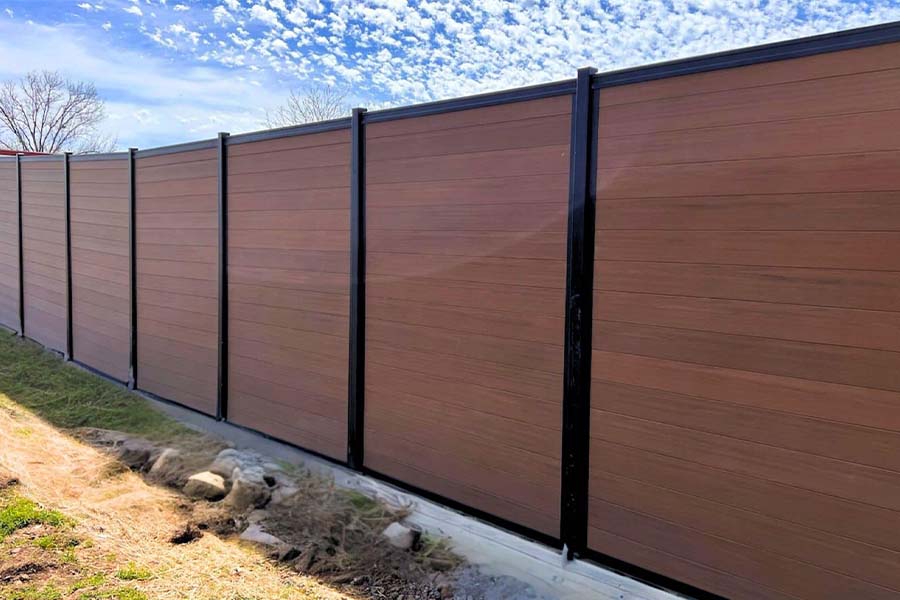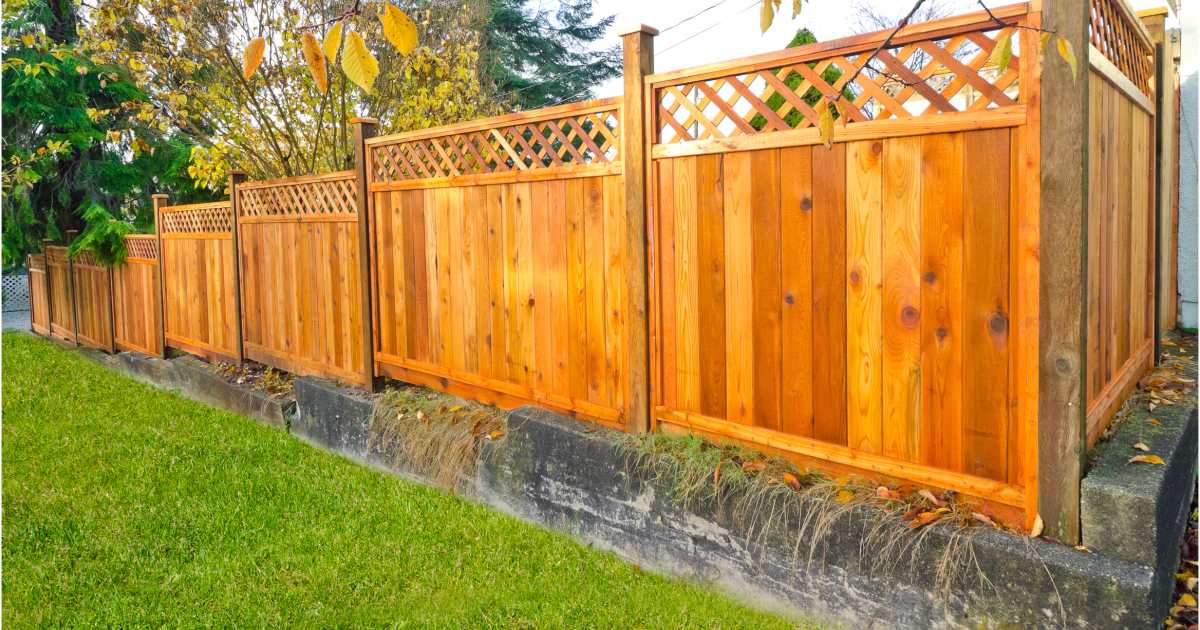All Categories
Featured
Picking the best fence product for your property can be a daunting task with the range of alternatives offered. Whether you're intending to boost protection, enhance personal privacy, or enhance the visual appeal of your home or business, the best fencing can serve several objectives. In this guide, we'll check out different secure fencing products, their advantages, and which alternatives might be best fit for numerous needs.
Benefits:
All-natural Look: Timber uses a warm, all-natural aesthetic that complements gardens, grass, and other exterior spaces. Adjustable: You can paint or tarnish wood fence any type of shade, allowing for unlimited layout opportunities. Personal privacy and Safety: When built as a strong panel, a timber fence can supply excellent privacy and protection. Downsides:
Upkeep Required: Timber fences require periodic maintenance to stop rot, bending, and damages from parasites like termites. Prone to Climate: Direct exposure to snow, rain, and sun can degrade the quality of the timber gradually, which suggests you might need to reseal or replace boards. Best For: Property owners looking for a typical, customizable fence with an all-natural look.
Benefits:
Resilient and Resilient: Plastic is unsusceptible to the weathering that wood fences experience, and it won't warp, split, or discolor. Low Maintenance: Unlike timber, plastic doesn't need discoloration or sealing. Cleansing it is as straightforward as washing it with water. Selection of Styles: Vinyl fencing is readily available in lots of designs and colors, and some versions even imitate the appearance of timber. Drawbacks:
Greater First Price: Plastic fencings can be much more pricey to install compared to other materials, such as timber or chain link. Prone to Splitting: While resilient, vinyl can come to be breakable and crack in extremely chilly temperatures or when struck with force. Minimal Personalization: Unlike timber, vinyl can't be quickly modified, so your style alternatives are much more restricted. Best For: Homeowners who focus on low maintenance and lasting longevity, and who are willing to invest in a higher initial price.
Benefits:
Inexpensive: One of one of the most budget-friendly secure fencing choices, making it perfect for huge residential properties or areas requiring substantial coverage. Reduced Upkeep: Wire mesh fence require little to no maintenance beyond periodic cleaning and repairs. Long lasting and Secure: While not visually enticing, chain link fencings are strong, difficult to climb up, and supply a high degree of safety. Downsides:
![]()
Lack of Personal privacy: A chain link fence does not offer much privacy unless you add slats or other adjustments. Industrial Look: The cord mesh may not complement all residential or commercial property kinds, specifically property homes or areas calling for a visual touch. Best For: Large homes or areas where budget plan is a priority, or for those who require a solid, secure border without the requirement for privacy.
Benefits:
Strong and Secure: Metal fencings use superb protection, as they are hard to climb up and offer a durable barrier versus trespassers. Long Life-span: Metal fencings can last for decades, specifically when dealt with for rust and corrosion resistance. Sophisticated Aesthetic: Wrought iron and steel fences add a stylish, timeless seek to homes, gardens, or commercial residential or commercial properties. Negative Aspects:
Costly: Steel fencings, especially functioned iron, have a tendency to have a greater upfront price than other products. Maintenance Needs: Steel and wrought iron fencings may corrosion with time otherwise effectively preserved, calling for routine painting or therapy. Minimal Privacy: Metal fencings are generally open, so they do not use the privacy that strong fences like timber or vinyl can give unless integrated with various other products. Best For: Those trying to find a high-security, ornamental choice with a long lifespan, specifically for high-traffic or upscale locations.
Advantages:
![]()
Reduced Upkeep: Composite secure fencing requires no paint, staining, or sealing. It's simple to clean with simply soap and water. Resilience: Immune to rot, bugs, and climate, composite fences last much longer than traditional wood. Eco-Friendly: Many composite materials are made from recycled wood and plastic, decreasing environmental effect. Drawbacks:
Expensive: The first cost of composite fencing can be more than wood or vinyl. Limited Personalization: While available in different colors, composite fencings don't offer as lots of style selections as wood. Heavy: Composite materials are usually heavier than various other kinds of secure fencing, which can make setup much more difficult. Best For: Those who want a low-maintenance, environment-friendly alternative that incorporates the appearance of timber with boosted sturdiness.
Conclusion. Choosing the right fencing material for your residential property depends upon a range of variables, including your budget, aesthetic choices, privacy demands, and maintenance readiness. Whether you go with the classic charm of wood, the low-maintenance advantages of vinyl, the toughness of metal, or the eco-friendly sturdiness of composite, picking the very best fence calls for cautious consideration of your property's unique demands. By recognizing the benefits and constraints of each material, you can make an informed decision that offers lasting value and contentment for your residential property.
- Timber Fence. Wood fence is a timeless selection for lots of homeowners as a result of its all-natural appeal, versatility, and ability to blend seamlessly with different building styles. Offered in a selection of designs, including ranch, personal privacy, and picket rails, wood can be personalized with paint or tarnish to match your wanted aesthetic.
Benefits:
All-natural Look: Timber uses a warm, all-natural aesthetic that complements gardens, grass, and other exterior spaces. Adjustable: You can paint or tarnish wood fence any type of shade, allowing for unlimited layout opportunities. Personal privacy and Safety: When built as a strong panel, a timber fence can supply excellent privacy and protection. Downsides:
Upkeep Required: Timber fences require periodic maintenance to stop rot, bending, and damages from parasites like termites. Prone to Climate: Direct exposure to snow, rain, and sun can degrade the quality of the timber gradually, which suggests you might need to reseal or replace boards. Best For: Property owners looking for a typical, customizable fence with an all-natural look.
- Plastic (PVC) Fencing. Plastic fences have expanded in popularity due to their reduced upkeep and sturdiness. Made from artificial plastic materials, vinyl fencings are immune to rot, fading, and insects, providing a clean, modern-day look with little maintenance.
Benefits:
Resilient and Resilient: Plastic is unsusceptible to the weathering that wood fences experience, and it won't warp, split, or discolor. Low Maintenance: Unlike timber, plastic doesn't need discoloration or sealing. Cleansing it is as straightforward as washing it with water. Selection of Styles: Vinyl fencing is readily available in lots of designs and colors, and some versions even imitate the appearance of timber. Drawbacks:
Greater First Price: Plastic fencings can be much more pricey to install compared to other materials, such as timber or chain link. Prone to Splitting: While resilient, vinyl can come to be breakable and crack in extremely chilly temperatures or when struck with force. Minimal Personalization: Unlike timber, vinyl can't be quickly modified, so your style alternatives are much more restricted. Best For: Homeowners who focus on low maintenance and lasting longevity, and who are willing to invest in a higher initial price.
- Chain Web Link Fencing. Wire mesh fence are a cost-effective alternative for those seeking security without the high rate tag. Commonly made use of in industrial residential or commercial properties, parks, and big suburbs, chain link fencings supply an effective border and are available in a selection of heights.
Benefits:
Inexpensive: One of one of the most budget-friendly secure fencing choices, making it perfect for huge residential properties or areas requiring substantial coverage. Reduced Upkeep: Wire mesh fence require little to no maintenance beyond periodic cleaning and repairs. Long lasting and Secure: While not visually enticing, chain link fencings are strong, difficult to climb up, and supply a high degree of safety. Downsides:

Lack of Personal privacy: A chain link fence does not offer much privacy unless you add slats or other adjustments. Industrial Look: The cord mesh may not complement all residential or commercial property kinds, specifically property homes or areas calling for a visual touch. Best For: Large homes or areas where budget plan is a priority, or for those who require a solid, secure border without the requirement for privacy.
- Metal Fencing (Aluminum, Steel, Wrought Iron) Metal fences, such as aluminum, steel, and wrought iron, are favored for their toughness, longevity, and safety and security. These materials are generally used in high-security commercial properties, upscale suburbs, and those seeking an advanced, decorative appearance.
Benefits:
Strong and Secure: Metal fencings use superb protection, as they are hard to climb up and offer a durable barrier versus trespassers. Long Life-span: Metal fencings can last for decades, specifically when dealt with for rust and corrosion resistance. Sophisticated Aesthetic: Wrought iron and steel fences add a stylish, timeless seek to homes, gardens, or commercial residential or commercial properties. Negative Aspects:
Costly: Steel fencings, especially functioned iron, have a tendency to have a greater upfront price than other products. Maintenance Needs: Steel and wrought iron fencings may corrosion with time otherwise effectively preserved, calling for routine painting or therapy. Minimal Privacy: Metal fencings are generally open, so they do not use the privacy that strong fences like timber or vinyl can give unless integrated with various other products. Best For: Those trying to find a high-security, ornamental choice with a long lifespan, specifically for high-traffic or upscale locations.
- Composite Fence. Composite fencing integrates timber fibers and plastic to create a product that imitates the look of timber yet is a lot more resilient and easier to preserve. It's an environment-friendly option made from recycled materials, making it both sustainable and functional.
Advantages:

Reduced Upkeep: Composite secure fencing requires no paint, staining, or sealing. It's simple to clean with simply soap and water. Resilience: Immune to rot, bugs, and climate, composite fences last much longer than traditional wood. Eco-Friendly: Many composite materials are made from recycled wood and plastic, decreasing environmental effect. Drawbacks:
Expensive: The first cost of composite fencing can be more than wood or vinyl. Limited Personalization: While available in different colors, composite fencings don't offer as lots of style selections as wood. Heavy: Composite materials are usually heavier than various other kinds of secure fencing, which can make setup much more difficult. Best For: Those who want a low-maintenance, environment-friendly alternative that incorporates the appearance of timber with boosted sturdiness.
Conclusion. Choosing the right fencing material for your residential property depends upon a range of variables, including your budget, aesthetic choices, privacy demands, and maintenance readiness. Whether you go with the classic charm of wood, the low-maintenance advantages of vinyl, the toughness of metal, or the eco-friendly sturdiness of composite, picking the very best fence calls for cautious consideration of your property's unique demands. By recognizing the benefits and constraints of each material, you can make an informed decision that offers lasting value and contentment for your residential property.
Latest Posts
Find Outstanding Auto Repair Care from Montclare Auto Repair – Reliable Repairs Await
Published en
1 min read
Why Chicago Drivers Pick Montclare Auto Repair for Dependable Service and Big Savings
Published en
1 min read
Explore WyHy FCU Reduces Your Costs on Financing and Accounts
Published en
1 min read
More
Latest Posts
Find Outstanding Auto Repair Care from Montclare Auto Repair – Reliable Repairs Await
Published May 28, 25
1 min read
Why Chicago Drivers Pick Montclare Auto Repair for Dependable Service and Big Savings
Published May 24, 25
1 min read
Explore WyHy FCU Reduces Your Costs on Financing and Accounts
Published May 24, 25
1 min read